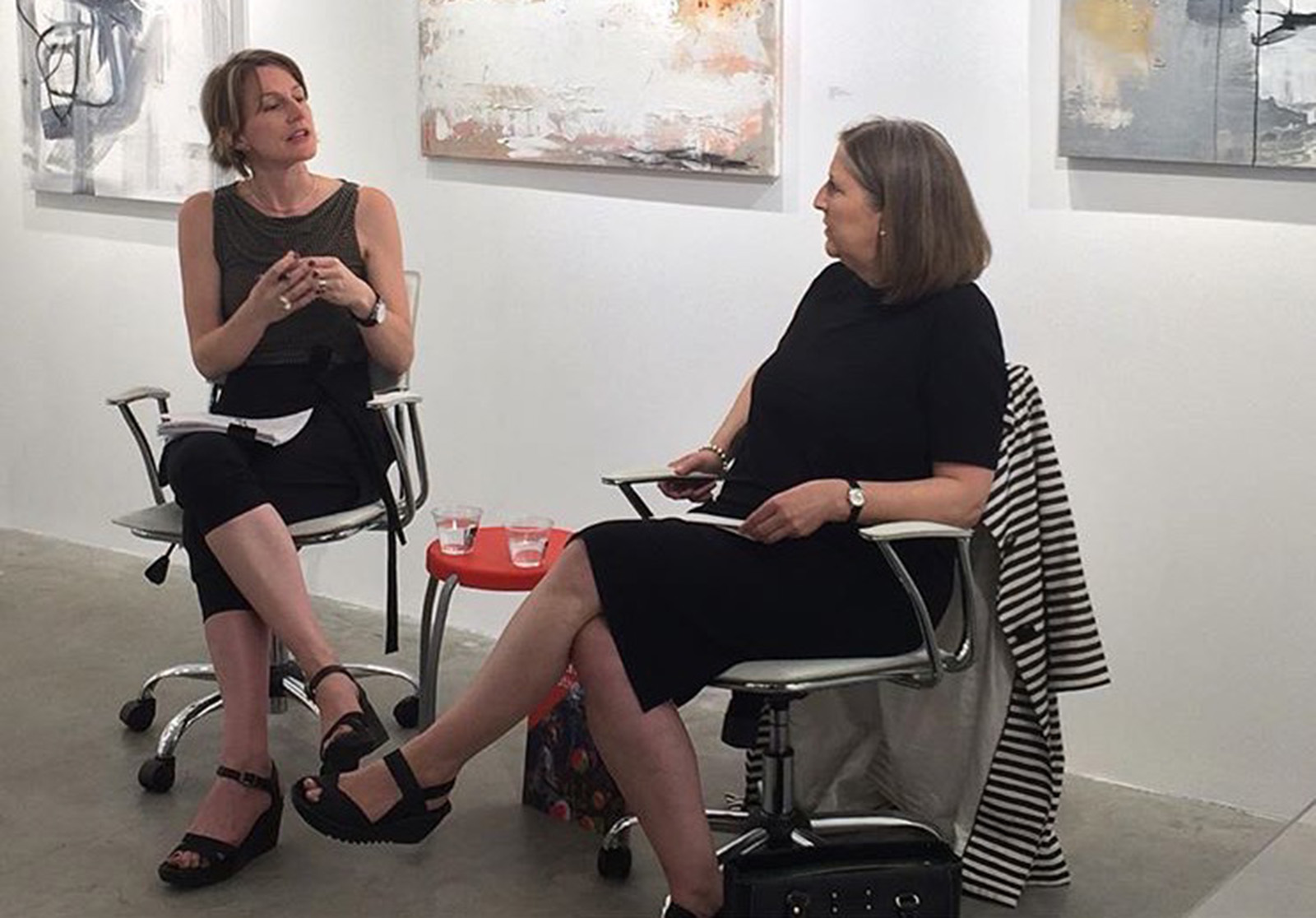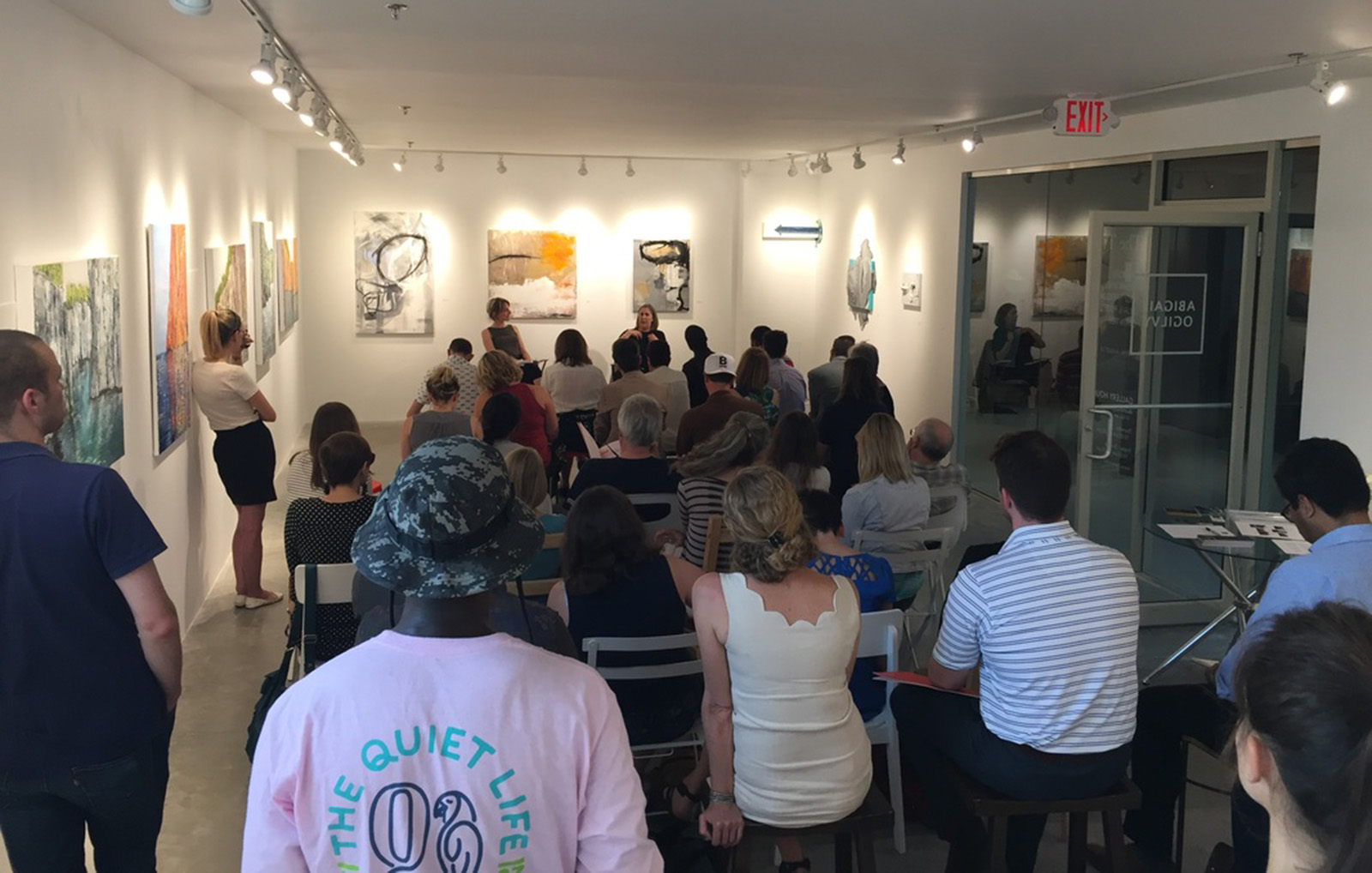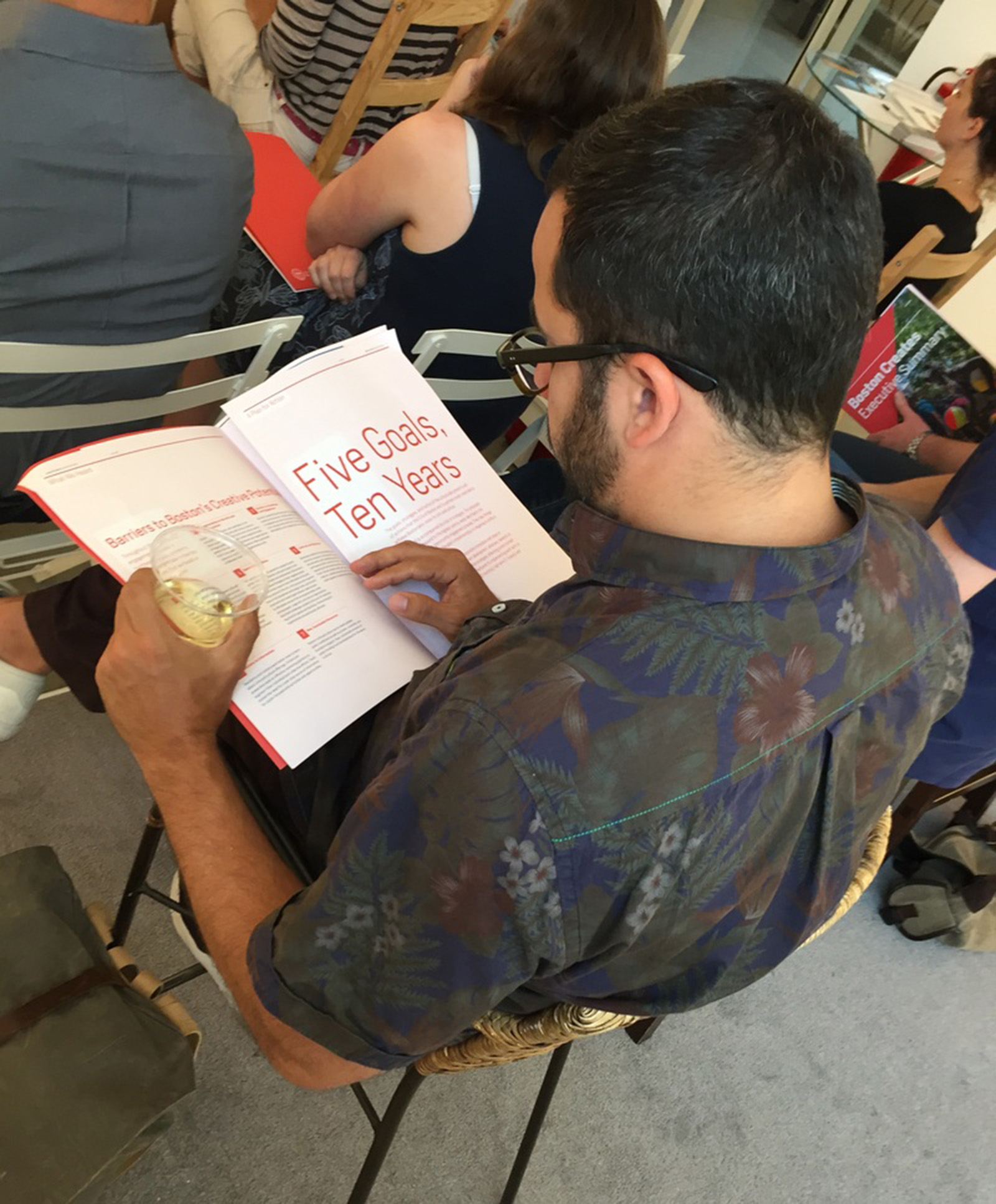Recap: Spark Boston Chief Chat with Julie Burros, Chief of Arts and Culture
Spark Boston holds a series of chats with leadership from the City of Boston. Here's a recap of our chat with Julie Burros, Chief of Arts and Culture.
This past year, Boston has began what we hope will be a new era in arts and culture. Julie Burros enters the scene as Boston's first Chief of Arts and Culture in 20 years, and after extensive research and discussion with artists, arts organizations, and the public, the City of Boston has finally announced a new Cultural Plan known as Boston Creates.
But with this new plan comes a lot of questions.
Wednesday night, we sat down with Julie Burros to finally hear it in person: What is the future of Boston arts?
Here are the key takeaways from their talk:
The Civic Role of Art
Both Mergel and Burros agree that the arts are a social good, an essential part of education, public health, and social and personal well-being. It has impact and value, in recovery, in expressions of culture. Arts and culture is about preserving and reinventing identity. This is part of the goal of the Cultural Plan: Coming to an understanding and appreciation of the goal of art in the City of Boston.
A Neighborhood-based Plan
In the extensive research done by Boston Creates, they have found that Boston is more than just one city: it is a collection of distinct neighborhoods, each with a unique, thriving culture. But often these distinctions can separate the City where it should be unified.
"Often one's greatest strengths is also their greatest weakness," Burros acknowledges something that many Bostonians are hesitant to admit. "When we talk about collaborating, working together, and traveling between neighborhoods, its an interdependent relationship. The geography works against this."
There are many barriers, some real, some perceived, in the cultural sector. A large part of the process in executing the cultural plan will be bringing different players into the same room to work together. The goal is to foster not only a conversation between the neighborhoods, but also exchange and collaboration, of both ideas and people.
Both Burros and Mergel referred to the Boston cultural scene as an ecosystem: one that needs symbiotic relationships between organizations — large, mid-sized, artist, student — to function.
The University Phenomenon
Boston is home to more universities and education institutions than any other city in the country. Yet after graduation, artists and cultural leaders leave for other places.
"What we want is for people to come here, fall in love, and stay." Burros voices everyone's hopes for the talent that floods the city at the start of every semester.
There is still more research to do with schools and universities, but one thing is clear: there must be a more unified effort to expose students to the cultural opportunities available in Boston.
The Arts Economy
The arts economy is very fragile and there is a considerable struggle to take the risk to open spaces for the practice and exhibition of art.
Efforts are being made to blur the lines between for-profit and non-profit in the business model of arts organizations. There are plans to engage artists in social practice: work dedicated to causes of social justice. The governments wants to use artists as a resource for visualizing their social issues so that they may have a better sense of how to solve them. Grants for artists are being created with this in mind.
To begin solving the space issues, there is a pilot program partnering with larger organizations who have space they can loan to artistic efforts. Currently there are already plans for converting spaces in the AT&T flagship store and Plumber's Hall in Dorchester. The concept is that the owners wiill define the parameters of the kind of work they want in their space, and the Council will match them with an organization which operates within those parameters. The hopes are to expand this initiative, and have it taken over by a non-profit organization.
Since we are early on in the execution of the plan, the Arts and Culture Council is still looking for some way to quantify the very qualitative value of art. They have been partnering with universities to develop new methods which can hopefully create a way to measure the efficacy of these plans.
Art is for Everyone
The misconception that the arts are elitist. Part of the cultural turn being described as a shift in that perception, from fine art being something exclusive, to something defined by its high quality.
This is one of the many silos, but perhaps the most relevant to fine arts organizations and artists. This has been Burros' job for many years: breaking down the barriers of what many people find exclusive in every art form, whether it is music, visual, or performance.
"Great art does the work," Burros states with finality. Mergel nods in agreement. "There is no secret. If it is great art, you will go with an open mind and an open heart. It will either move you or it won't. You don't need to know anything to understand it; you just have to be open."
The biggest impact that the Arts and Culture Council has made is the cultural plan itself, the fact that it exists. It is meant to be widely applicable and foster collaboration. Already organizations that have been disconnected thus far are finding alignments. From here, they need more resources. But the process has begun, and while it will be a long one, we can look forward to watching Boston Arts and Culture slowly improve, and transform.
This post was written by Puloma Ghosh. She is currently Assistant Director at Abigail Ogilvy Gallery and Gallery Assistant at Miller Yezerski Gallery. She recieved her B.A. in English from Tufts University and has been involved in Boston arts since 2014, when she worked with Artscope Magazine.




